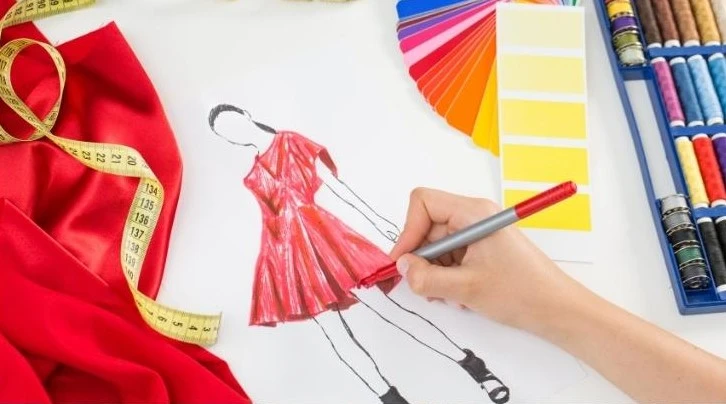- +91 9930514720
- +91 8369271572
- sales@sonalijain.co.in
- 205/A, B Wing, Prathmesh Tower, Raghuvanshi Mill Compound, Lower Parel
©2023 Sonali Jain. All rights reserved. Designed by KRIL Digital

How Fashion Designers Inspire Themselves?
To create innovative and attention-grabbing designs, designers rely on inspiration as the initial spark. Whether they are architects or fashion designers, they begin with an idea, image, or emotion that drives them. Through a creative process, they refine this inspiration into a design concept and ultimately a finished product. It is essential for them to effectively convey their vision and creativity through their designs and communicate their inspiration to the audience.
For fashion designers, inspiration plays a vital role, but it can often be a challenging pursuit. They must continually generate new ideas while staying at the forefront of the industry. Have you ever wondered what inspires them? How do they consistently generate fresh concepts? How do they transform an object or emotion into a complete product line?
This article aims to demystify the process of finding inspiration for fashion designers and how they translate it into distinctive garments, shoes, and accessories.
Inspiration is fundamental for fashion designers
Fashion designers go beyond simply tweaking existing designs or following trends set by others. They possess the ability to transform stories, emotions, and concepts into inspired clothing that resonates with their audience, all while considering factors like form, function, and budget.
The creative process varies depending on the designer’s specialization and market level. Some designers have more freedom to incorporate inspiration into their designs, while others must prioritize cost, functionality, and appeal for larger markets.
For instance, a menswear designer may draw inspiration from different concepts compared to a swimwear designer. Additionally, the design process for haute couture collections often stems from different sources than ready-to-wear lines.
Regardless of industry requirements, all fashion designers begin with some form of inspiration. In the following sections, we explore common sources of inspiration and delve into how this inspiration is translated into clothing and accessories.

Sonali Jain
I'm Sonali Jain, a celebrity fashion designer with years of experience working with entertainment icons. My mission is to inspire self-expression through fashion, celebrating the beauty of every season.
Recent Posts
How Fashion Designers Inspire Themselves?
Styling Yourself in Designer Clothing this Ganesh Chaturthi
Follow Us

What are the most common sources of inspiration?
1. Nature
2. Art
The world of art has long been a wellspring of inspiration for fashion designers, with paintings, sculptures, and artistic movements igniting their creative imaginations. The intrinsic connection between fashion and art throughout history is undeniable.
Renowned designers often find themselves deeply influenced by art, whether it be a captivating pattern, a unique shape, or a harmonious color palette. They may seek to recreate the play of light or the texture found in a specific artwork. The themes and symbolism conveyed in art also serve as fertile ground for inspiration, allowing designers to infuse their creations with deeper meaning.
The interplay between fashion and art continues to fuel the creative endeavors of designers, resulting in stunning and innovative expressions of style.
Women have a plethora of options, from stunning sarees to lehengas and anarkalis. Experiment with hairstyles and makeup that suit your outfit and personal style. Braids, bun hairstyles, and traditional makeup can work wonders.
3. Films & Literature
The relationship between fashion and film has been intertwined since the inception of cinema. Fashion designers frequently collaborate with filmmakers to craft memorable looks and characters, recognizing the pivotal role of design in creating impactful movies. From costumes to sets, props to lighting, design plays a crucial part in the success of great films.
In addition to film, avant-garde literature serves as a wellspring of inspiration for many fashion designers. They draw upon clothing trends and overarching themes found in novels, infusing their collections with elements ranging from unrequited love to time travel and political satire. The fusion of fashion and literature allows designers to weave narratives and concepts into their creations, resulting in collections that transcend mere garments.
The convergence of fashion, film, and literature continues to shape the creative landscape, inspiring designers to push boundaries and create truly captivating and multidimensional works of art.
4. Emotions
5. Narratives
- 205/A, B Wing, Prathmesh Tower, Raghuvanshi Mill Compound, Prathmesh Tower Better Homes India, Lower Parel, Mumbai, Maharashtra,
- sales@sonalijain.co.in
- +91 9930514720
- +91 8369271572
© 2023 All Rights Reserved. Design by KRIL Digital

